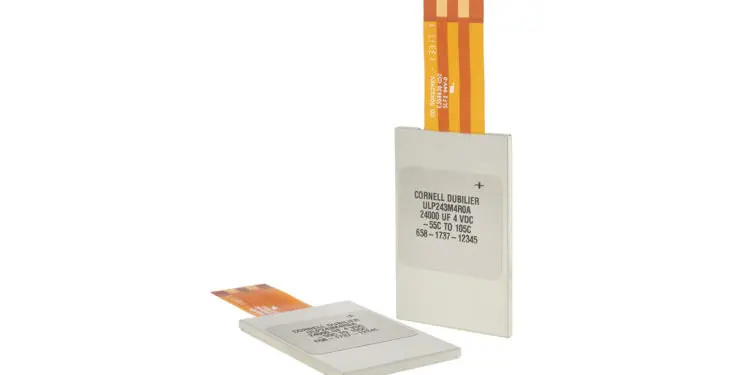Electronic Products announces winners of the 2019 Product of the Year Awards selected by the editors of Electronic Products. The passive components category winner is:
Cornell Dubilier Electronics ULP Series of Ultra-Low-Profile Aluminum Electrolytic Capacitors
Cornell Dubilier Electronics (CDE) has developed an ultra-low-profile family of aluminum-electrolytic capacitors that can replace large arrays of surface-mount (SMT) capacitors. Called a “game changer” for engineers designing compact electronic devices, the ULP series is designed specifically for applications requiring bulk capacitance and the lowest board profiles and offers considerably higher energy density than arrays of SMT capacitors. This design allows engineers to use a single component to save space, weight, and cost while improving reliability.
“With energy density exceeding 0.4 J/cc, a single ULP capacitor provides much greater bulk storage in a smaller footprint than a bank of low-profile SMT capacitors,” claimed Mario DiPietro, CDE’s product manager. “The technology is particularly effective at displacing parallel banks of SMT solid tantalum capacitors to achieve high capacitance on the board.”
Capacitance values range from 500 µF to 24,000 µF. Working voltages range from 4 to 63 WVDC with an operating life of 3,000 hours at 85°C without voltage derating. Unlike solid tantalum capacitors, type ULP capacitors do not require voltage derating, said CDE.
The ULP family is offered in package heights of 2.2 mm and 3.2 mm. With flat ribbon-lead–style terminations, it is even possible to mount the device off-board for added design flexibility. These capacitors are suitable for use in portable devices and a wide range of applications in which height profile, board space, and weight are critical design factors.
The 2.2-mm thin part is available with up to 7,800 µF; the 3.2-mm part is rated at up to 24,000 µF. Both have voltage ratings from 4 to 63 WVDC, depending on capacitance.






























